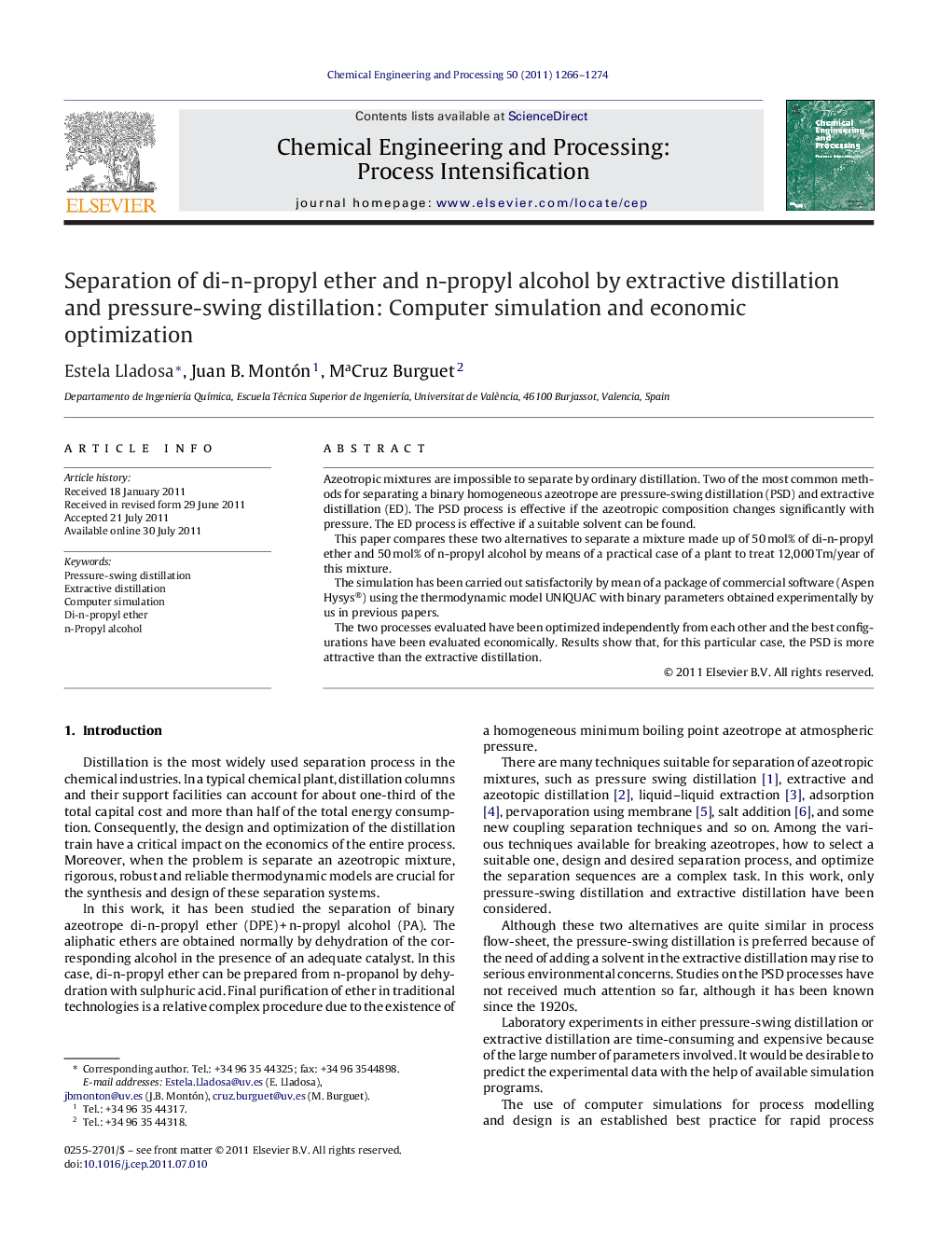| کد مقاله | کد نشریه | سال انتشار | مقاله انگلیسی | نسخه تمام متن |
|---|---|---|---|---|
| 688411 | 1460126 | 2011 | 9 صفحه PDF | دانلود رایگان |

Azeotropic mixtures are impossible to separate by ordinary distillation. Two of the most common methods for separating a binary homogeneous azeotrope are pressure-swing distillation (PSD) and extractive distillation (ED). The PSD process is effective if the azeotropic composition changes significantly with pressure. The ED process is effective if a suitable solvent can be found.This paper compares these two alternatives to separate a mixture made up of 50 mol% of di-n-propyl ether and 50 mol% of n-propyl alcohol by means of a practical case of a plant to treat 12,000 Tm/year of this mixture.The simulation has been carried out satisfactorily by mean of a package of commercial software (Aspen Hysys®) using the thermodynamic model UNIQUAC with binary parameters obtained experimentally by us in previous papers.The two processes evaluated have been optimized independently from each other and the best configurations have been evaluated economically. Results show that, for this particular case, the PSD is more attractive than the extractive distillation.
► In this study, we study the separation of di-n-propyl ether and n-propyl alcohol azeotropic binary mixture.
► Steady-state comparisons have been presented of a pressure-swing distillation and an extractive distillation processes.
► Commercial software program has been used to simulate the processes.
► Pressure-swing distillation is much more attractive to separate the azeotropic mixture.
Journal: Chemical Engineering and Processing: Process Intensification - Volume 50, Issues 11–12, November–December 2011, Pages 1266–1274